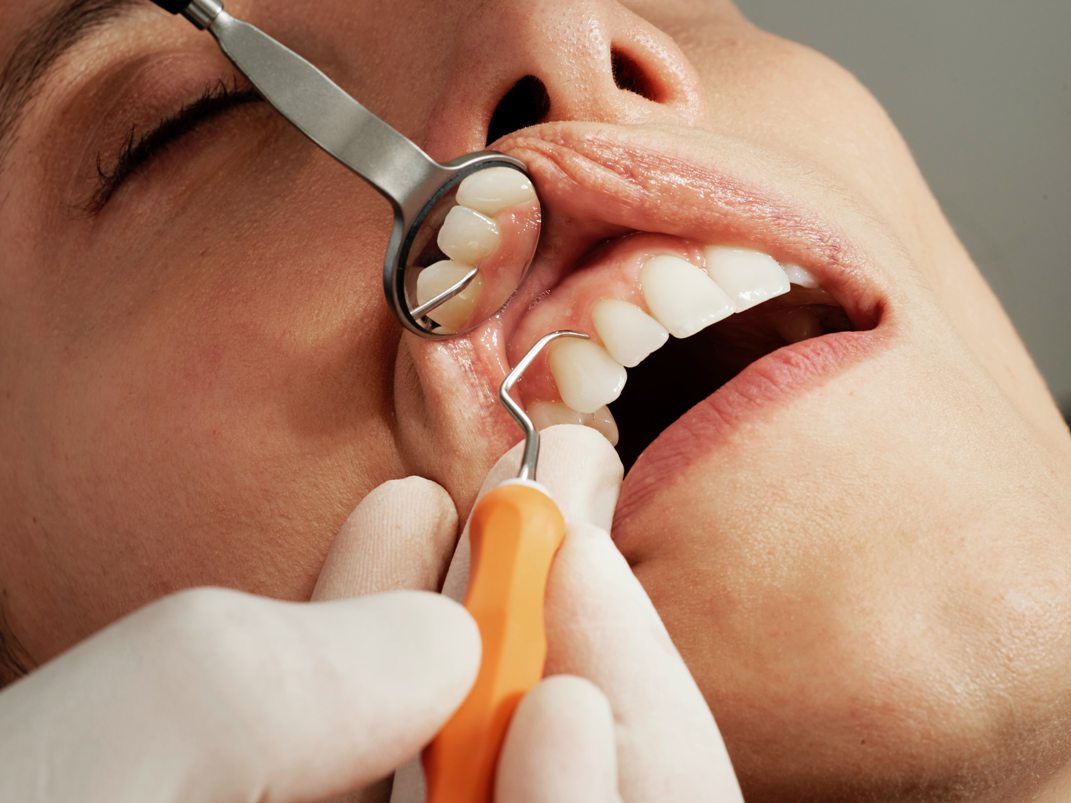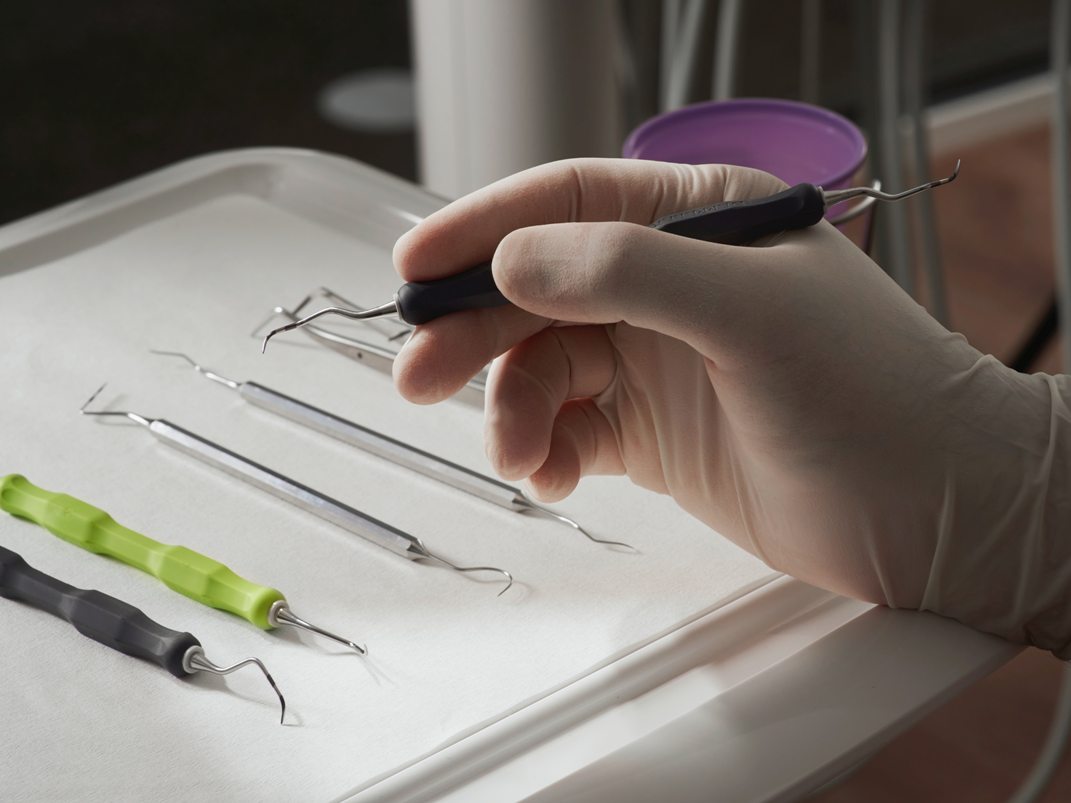Gum Therapy
Treating gum disease using biocompatible, nonsurgical, and systemic approach in our Livermore dental care office
S. WARD ECCLES, D.D.S.
Welcome New Patients
About Us
Gum Therapy
What is Periodontal Disease
Periodontal disease is an infection of the gum tissue and bone, an invasion by pathogenic microorganisms in which conditions are favorable for growth, reproduction of toxins, and resulting injury to gum tissue
Diagnosing
To determine the level of infection, proper diagnosis needs to be conducted including soft tissue exam (tissue tone), measuring gum pockets depths, recession (gum and bone loss), mobility (teeth instability) and more
Biocompatible, Non-Surgical Approach
The “Periodontal Nutrition” program is a year-long program that is designed to treat the gum infection by improving the body’s immune system and removing infection from the gums
Why not just do gum surgery?
Gum surgery does not treat the disease, only the results of the disease. It has a very high recurrence rate as the cause is simply not addressed.
Team-Work Approach
Prevention really is the best medicine. In addition to having the gum pockets irrigated at dental visits, irrigation must also be done at home on a daily basis in order to heal gum pockets.
What is Periodontal Disease
There has also been shown a relationship with diabetes, ulcers, rheumatoid arthritis and chronic obstructive pulmonary disease and pneumonia. If physicians saw the organisms infecting the body, the kinds of microorganisms we see in the microscope, they couldn’t move fast enough to prescribe antibiotics. These microorganisms are very powerful. It is a serious infection! Many infecting agents linked to heart disease originate in bacteria from the mouth.
Recent research shows consequences if left untreated increases chance of developing:
%
Heart Disease
%
Preterm, low birth weight
%
Stroke
%
Not surviving a heart attack
Diagnosing (Level of Infection)

To determine the level of infection, the following is reviewed and considered.
- Soft tissue exam (tissue tone)
- Measuring Gum Pockets depths (1-3mm is normal, 4-5mm is concerning, 6-8mm means serious gum infection)
- Bleeding on probing
- Odor or discharge (pus, fetid odor or metallic taste)
- Recession (gum and bone loss)
- Mobility (teeth instability)
- Connective Tissue Destruction
- Bone Loss (via x-rays)
- Microscopic Sample (microscope view of biofilm) could be done at following visit
Biocompatible, Non-Surgical Approach
Beginning the program
- Diet Pattern Analysis: Understand the role sugars and processed foods play in inflammation.
- Culture & Antibiotic Sensitivity Testing.
- Medical Evaluation & Systemic Testing: Coordinate care with your physician where medication side effects are causing a dry mouth.
- Bacterial Slide: A sample of biofilm taken from the gum pockets is examined under a microscope. This is the quickest and most cost-effective clinical method to evaluate risk factors at individual gum pockets. It aids to determine the presence of a wide range of putative periodontal pathogens, including protozoans-like amoebae and trichomonads; spirochetes, fungi, and yeasts.
- Nutritional Supplements: Body’s own healing powers enhanced by utilizing nutritional supplements to help overcome causative factors such as trace mineral imbalance, blood sugar disturbances, and weak immune system.
- At-Home Care: We teach at home oral hygiene procedures, providing unique tools to irrigate gum pockets, daily. Without daily irrigation, gum pockets will not be able to heal completely.
Sequence of Care
- Next sequential appointments will be to “deep clean” in the gum pockets to remove calculus and plaque from under the gum and on the tooth surface. These appointments are 1-2 weeks apart and focus on cleaning one quadrant in the mouth at a time. A review of the previously cleaned quadrant will also be done to remove any remaining calculus.
- Before each quadrant is cleaned, a sample of biofilm from the gum pockets is reviewed using a microscope. Seeing the creepy wigglers is a huge motivation for patients.
- Ozonated water will be used to irritate the gum pockets to kill bacteria in the biofilm. This reduces the amount of bacteria that can get into your bloodstream from open blood vessels in bleeding gums, and decreases inflammation.
Re-Evaluation
30 days is a good time to evaluate the healing of the gum pockets after the last deep cleaning appointment. New measurements will be taken, a sample from the gum pockets will be reviewed under the microscope, and overall inflammation will be accessed.
Surgery
Patients who have lost bone and gum tissue to the point tooth mobility is concerned, may need to have a gum graft complete. Periodontal disease must be managed before completing any grafting. If not, grafting will fail.
Maintenance
Some dentists or periodontists may tell patients that once they have periodontal disease, it cannot be cured, only maintained. We do not believe that. Aggressive follow-ups may be needed to monitor at-home care diligence to aid in a successful healing process.
Why not just do gum surgery?

- Gum surgery does not treat the disease, only the results of the disease. It has a very high recurrence rate as the cause is simply not addressed. They will simply recommend flossing and brushing more often. And, the results could leave you with unsightly long teeth. It can also greatly increase potential for sensitive roots and increased wear on the now exposed softer roots.
- Surgery does nothing to resolve the true cause of infection; which is caused by microscopic organisms like bacteria (including spirochetes), protozoa, yeast, and viruses. The gums get reinfected over time because of the unhealthy conditions of the body.
Team-Work Approach
When it comes to gum disease, prevention really is the best medicine. It’s not enough to have pockets irrigated at dental visits, irrigation must be done at home on a daily basis in order to heal gum pockets. Monitoring progress is critical to long-term improvement and stability of bone and gum tissue.
Benefits are:
- Painful, unsightly surgery almost never needed
- Natural holistic healing promoted
- Less invasive
- Less costly
- Actual causes are addressed – not only the results/symptoms of the infection
- Source of inflammation to the rest of body is eliminated
Biological Dentistry
Using science-based, biological techniques, technologies, and materials for your oral and overall health
Family Dentistry
Establishing preventative dental care routine and restorative treatment options for the entire family
Safe Mercury Removal
Replacing amalgams with non-toxic filling materials while safely capturing released mercury
Root Canal
Emphasizing a biological approach to diagnosing and treating infected teeth
Gum Therapy
Addressing periodontal “gum” disease systemically and non-surgically
Cosmetic Dentistry
Restoring and replacing natural teeth using a conservative approach with non-metal materials
Dental Surgery
Our dental surgery approach respects the body’s natural ability to heal
TMJ Therapy
TMJ dysfunction causes jaw pain, facial tension, headaches & neck discomfort
Ozone Therapy
A safe, natural treatment to disinfect & reduce inflammation

